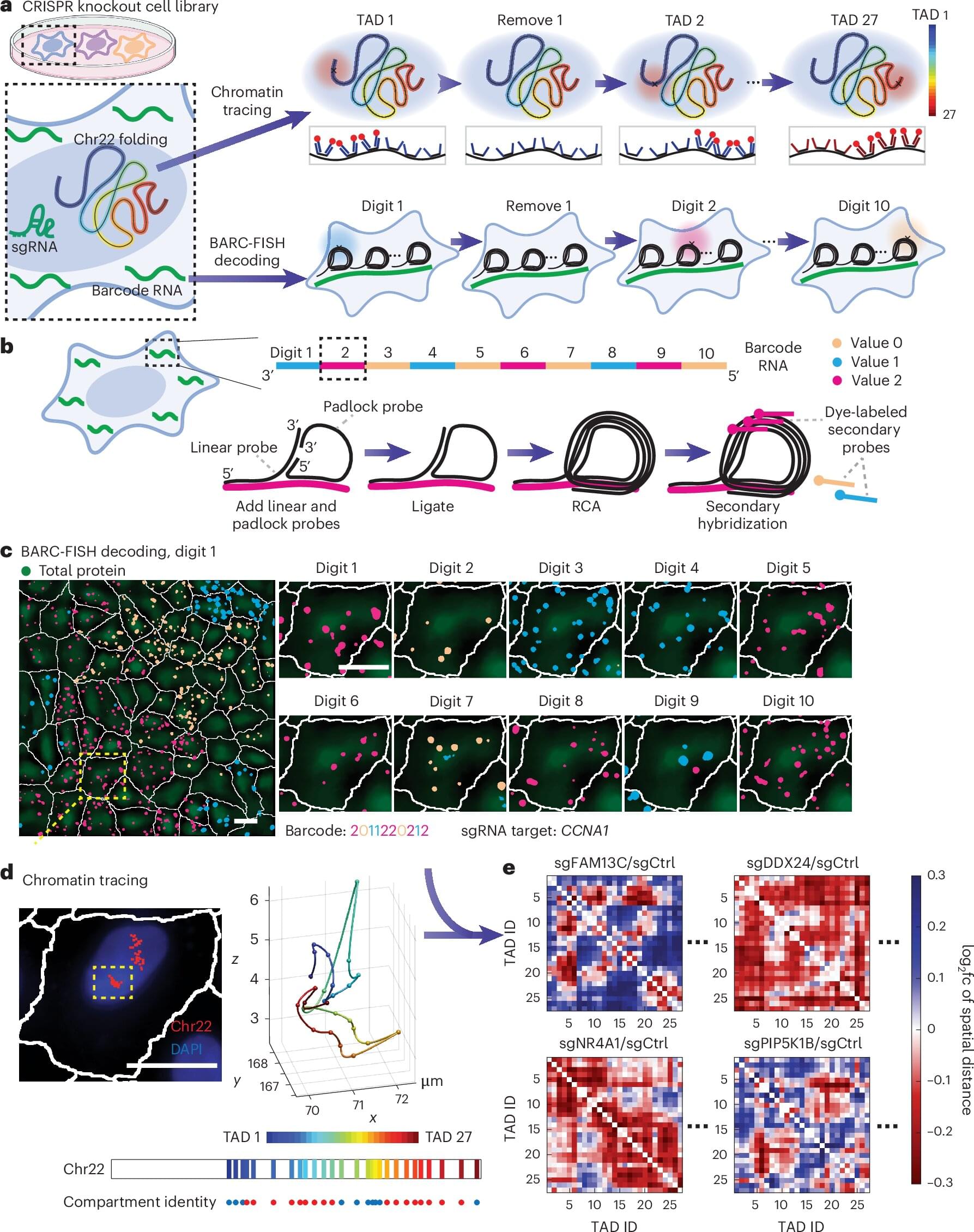Most cells in the human body each contain about six feet of DNA. Yet the nucleus, where DNA is coiled, is no larger than a single speck of dust. Despite its density, DNA is not a tangled ball of yarn. It is organized into intricate layers of loops that fold and unfold in response to cues from the cell.
Scientists know that the three-dimensional shape of DNA is important. This long helical thread is peppered with genes that are translated into proteins to drive cellular activity. And the structure of the genome —those layers of loops—determines which genes are active at any given time.
How the three-dimensional structure of the genome is maintained, however, is less clear. Structural changes and abnormalities are associated with many diseases, such as cancer and developmental disorders. Identifying what controls genome structure could yield targets for treatment.
